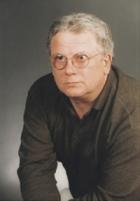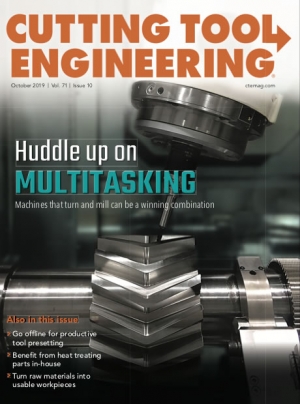As you likely know, I’ve been in manufacturing a long time—actually, for over 42 years. I started out loading trucks for a steel supply house in Chicago back in 1977. Not too long after, I learned how to run manual saws and power hacksaws. I picked up how to use manual mills and lathes shortly thereafter. Subsequently, I learned how to run turning centers and machining centers. Those were the days of paper tape and punch cards.
After the early years, I became a CNC programmer, applications engineer and robotics programmer and dabbled in design engineering for a short time. All this was in a five-year time frame. I then was hired as a technical applications engineer for robots and thermal spray systems in Wisconsin. I worked with clients in the medical and dental fields, aerospace, offshore oil platforms and even automotive.
From there, we moved to Maine where I worked as a metal fabrication designer in the medical field. While in Maine, I also worked at a general machine shop programming various parts for different customers. As a manufacturing engineer, I then went to a company that machined parts for the energy field, and I also did more aerospace work.
We came back to Wisconsin after 16 years, and I took some fill-in contract work for a year. I then worked for a company in Illinois while living in Wisconsin. I was the manufacturing engineer and later the machine shop manager.
In 2001, I started writing for a magazine called Cutting Tool Engineering. Maybe you’ve heard of it? LOL. I also wrote for a trade magazine in India for a year.
After working in manufacturing for all this time, I have pulled the plug. I am just shy of 67, and I have retired—sort of. I am no longer in manufacturing. My wife and I have settled in central Wisconsin and are the proud owners of a bowling alley with a bar and grill. We are having the time of our lives. It’s a little more work than we expected, but we are having fun in our golden years.
I would like to take this opportunity to thank my past and present readers for supporting my column and the magazine. To all of you who sent letters to the editor agreeing or disagreeing with my views, I thank you. I could not have chosen to write for a more informative technical trade magazine. I would like to thank Don Nelson, my former editor and former publisher of CTE. Without his support, I doubt I could have started writing, let alone for almost 19 years. I remember the first article he asked me to write. He wanted 1,500 to 2,000 words. I thought that more was better, so I wrote over 6,000 words. We needed a little editing, to say the least. The editor for years now has been Alan Richter. I appreciate all he has done for me over these years. It also has been a privilege writing alongside the other writers in this fine magazine.
So to every one of you, thank you for tolerating my rants and praises about the industry and people in this industry all these years. I consider you my friends and hope you continue to support this magazine. Take care, and may God bless.
Related Glossary Terms
- centers
centers
Cone-shaped pins that support a workpiece by one or two ends during machining. The centers fit into holes drilled in the workpiece ends. Centers that turn with the workpiece are called “live” centers; those that do not are called “dead” centers.
- computer numerical control ( CNC)
computer numerical control ( CNC)
Microprocessor-based controller dedicated to a machine tool that permits the creation or modification of parts. Programmed numerical control activates the machine’s servos and spindle drives and controls the various machining operations. See DNC, direct numerical control; NC, numerical control.
- robotics
robotics
Discipline involving self-actuating and self-operating devices. Robots frequently imitate human capabilities, including the ability to manipulate physical objects while evaluating and reacting appropriately to various stimuli. See industrial robot; robot.
- turning
turning
Workpiece is held in a chuck, mounted on a face plate or secured between centers and rotated while a cutting tool, normally a single-point tool, is fed into it along its periphery or across its end or face. Takes the form of straight turning (cutting along the periphery of the workpiece); taper turning (creating a taper); step turning (turning different-size diameters on the same work); chamfering (beveling an edge or shoulder); facing (cutting on an end); turning threads (usually external but can be internal); roughing (high-volume metal removal); and finishing (final light cuts). Performed on lathes, turning centers, chucking machines, automatic screw machines and similar machines.


